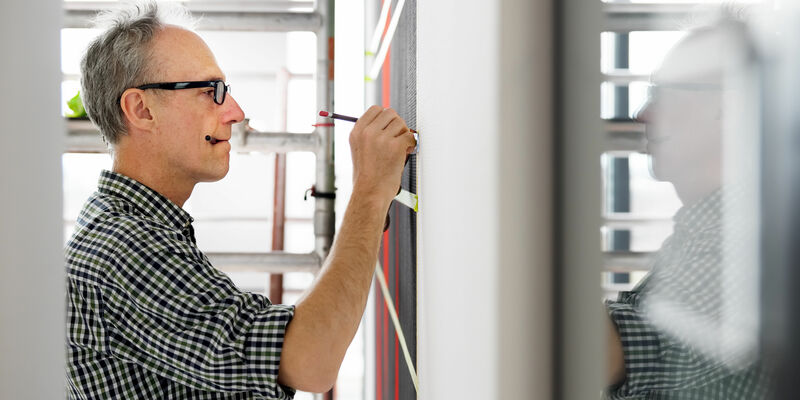
- Campus
- 21/03/2019
"People like to see how art is created"
The murals that are currently being created in Atlas were already devised in 2016 by muralist Gijs Frieling. With his idea of filling entire walls with images of scientific publications, while the residents of the building are already working there, he beat the competition and was commissioned. The artwork is called '16 Covers'. He is now working on it with a team and you can see them at work until the end of March. Cursor had a meeting with this versatile artist.
He is not an artist who wants to go undisturbed when he paints. No, Gijs Frieling (1966) finds it pleasant that people talk to him about and during his work. The first fifteen years of his artistic career he worked alone in his own studio, back then still in Amsterdam. He liked that, but after a first large mural in 1997, he noticed what it is like to work with a team. “That piece of art would only have existed for about three months, I realized that I should not spend too much precious time on it and that it would be best to work with assistants. Since then I have been working on murals with a team of experienced and inexperienced people and that gives a nice dynamic.”
Frieling has two daughters and two sons who also all sometimes paint along with the team. This time Job (17) is joining them in Atlas. In addition, there are about five employees who are now going to apply sixteen images of scientific publications on the walls of Atlas in three periods of four consecutive days. They stay in the Student Hotel and spend the evenings together.
Paint strokes
“The perk of murals is that you have to adapt to the context. You have to deal with the users and the building. I prefer to work when a building is already in operation. I notice that people like to see how something is created. That is more pleasant than suddenly seeing a piece of art where you have to wonder, you can wonder what the meaning is. The meaning doesn't count that much for me."
Frieling values the ritual aspects of the work much more. “I make the paint on site. The mixing of pigment and binder ensures that I come into an atmosphere where I pay full attention to the work. This counts as well for the application of the substrate. I ask my team members and do it myself, to paint the very large surfaces evenly with a fairly narrow brush. Not with a block brush or roller, because every painter has his own handwriting. The strokes give life to the painting. "
The mixing of pigment and binder ensures that I come into an atmosphere where I pay full attention to the work
Focus
He thinks it is important to be able to devote to a job for one hundred percent. “That starts with very good preparation. Once, I was just a young student at the art academy, I was commissioned to paint a piano for a friend of my parents. I started without a well thought out plan and my doubts grew. At some point we decided together to sand everything off and to repaint in one color.”
He has now also handed over part of the preparation. A producer has joined the team: Mark van Veen. It is up to him to arrange well-plastered walls, sturdy scaffolding and clear agreements with the facility services. "This way I can entirely focus on painting itself."
Every prize was very valuable when I received it. Because it is a confirmation and you will never get enough of those
Fashion show
Frieling has won many prizes with his striking wall art. At first he doesn't want to mention a favorite. “Every prize was very valuable when I received it. Because it is a confirmation and you will never get enough of those.” But if he really has to mention two prizes, he knows which ones. “In 1994 I received the Koninklijke Prijs voor Vrije Schilderkunst (Royal Award for Free Painting). Now I am part of the jury for this incentive prize, very nice. A prize that has been the most influential for me is the Cobra prize I got in 2009. I received money, an exhibition and money to make a book. ”
That book Vernacular Painting, which he created together with Job Wouters with whom he works a lot, has been a stepping stone to a special project. “I don't know how, but fashion designer Dries van Noten has seen that book. It is about my murals and the titles have been calligraphed by Job Wouters. Van Noten contacted us and we made a fabric collection with which he designed clothing. I also wear clothes of that collection myself. The suit not too often, because it is very striking, but I often wear the shirts. Even more special is that we subsequently painted a scenery for the show of Van Noten's collection in the Grand Palais in Paris.”
Do it yourself
Frieling loves his job. And he can recommend anyone to make a mural, even if it is just a small one. “It is a way to connect with the physical world around you. Nowadays, environments are completely made for us, totally finished. You are connected to each other via a computer. Who still touches anything but a keyboard? It is very good to pay attention to the physical aspect and to really be in touch with the environment that was designed for you. This also applies to the new spaces on this campus, where many walls have been replaced by glass. But paintings on glass are also great to make.”
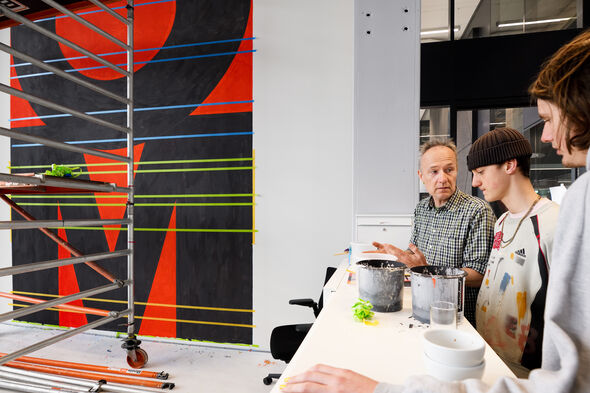
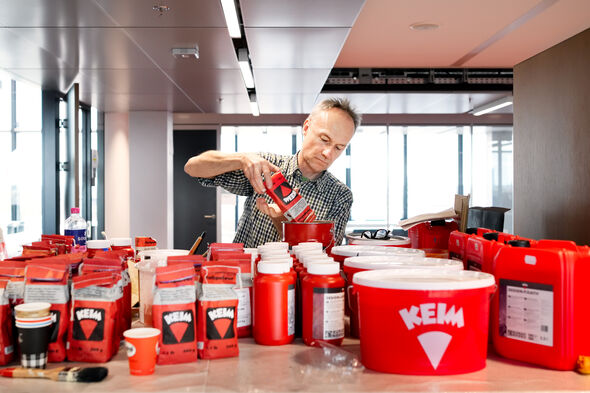
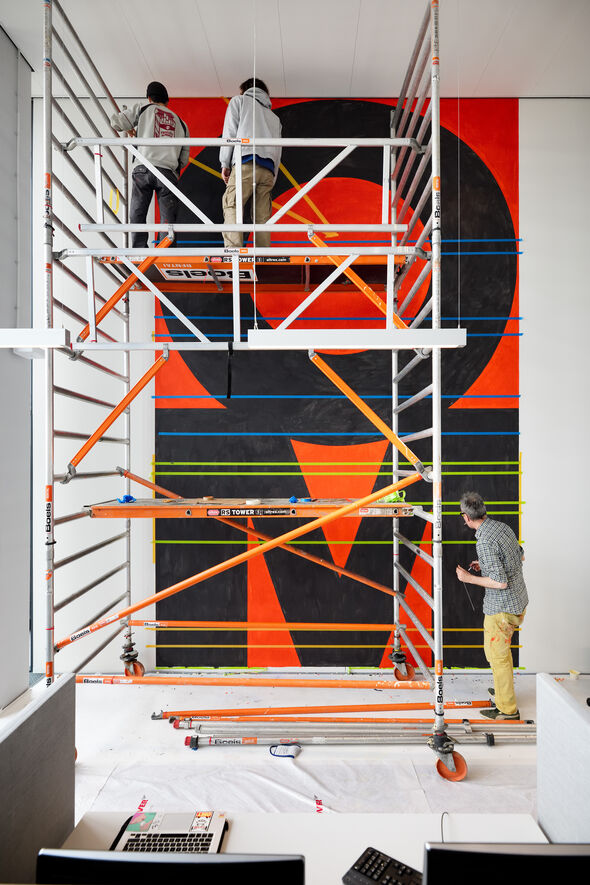
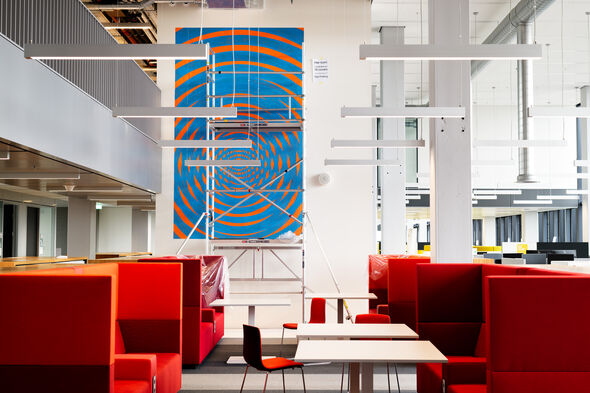
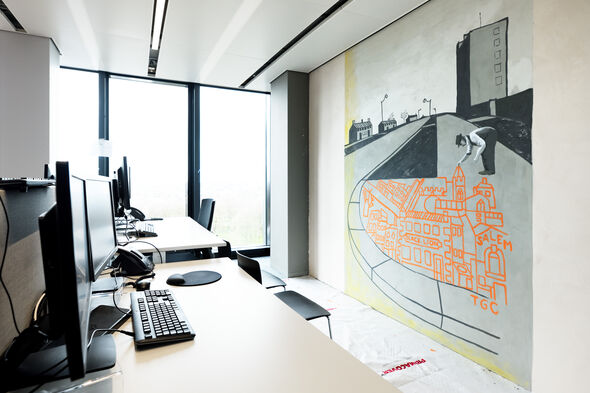
Discussion